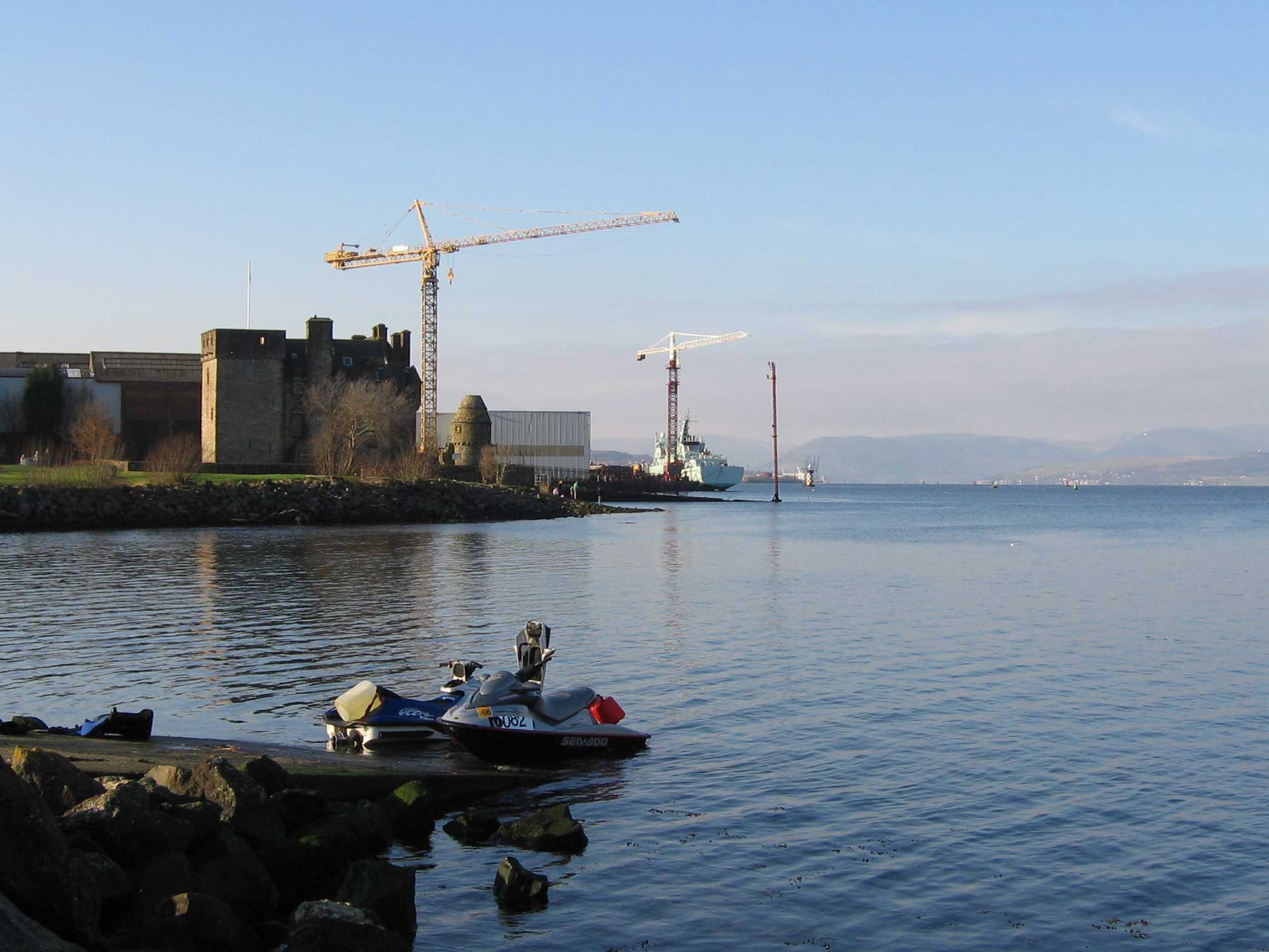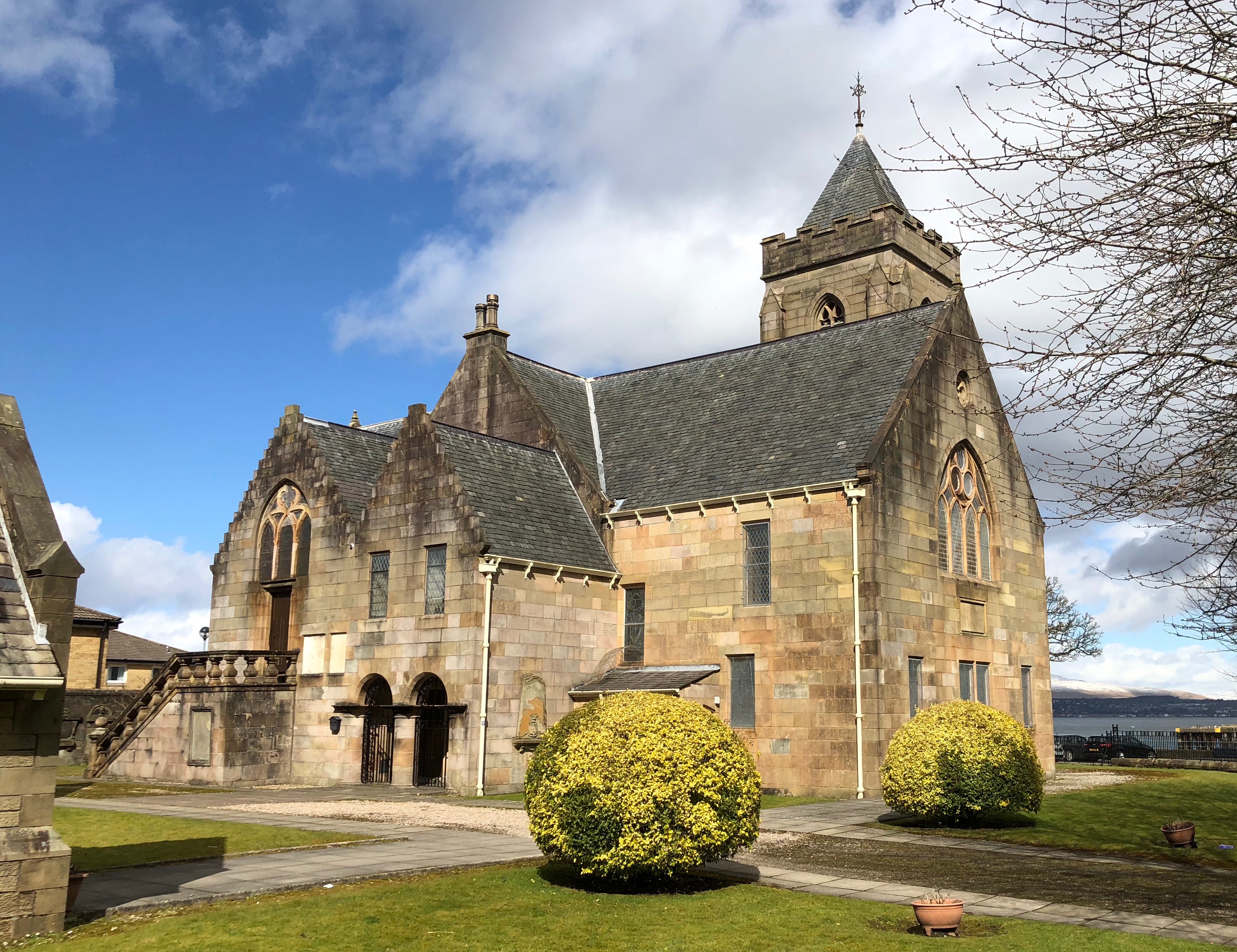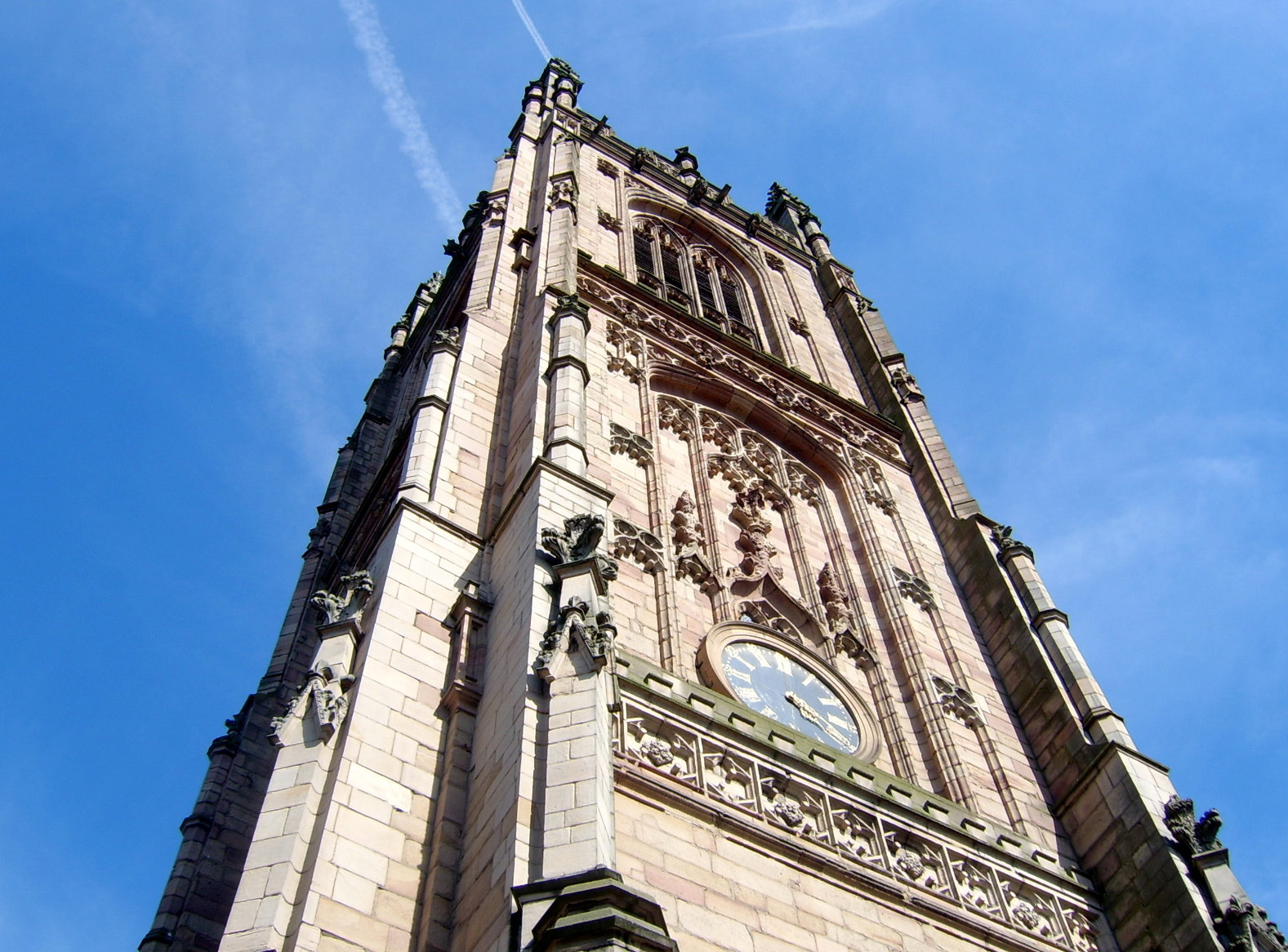|
Jericho Benedictines
The Jericho Benedictines are a Society of Apostolic Life which is one of the forms of religious congregation within the Latin branch of the Catholic Church. History The Jericho Benedictines began in Paisley, Scotland, during the 1970s, when a group of men found themselves deeply moved by the plight of those who lived rough, and were marginalised by society because of their struggle with alcohol. Father James Ferguson, a priest of the Diocese of Paisley, gathered these men together and they chose the name 'Jericho Benedictines', a name which is highly significant. The Jericho Benedictine website states that its members have the ministry of... "welcoming, supporting, and caring for those being 'passed by on the other side' irrespective of colour, class, creed, sex, or sexual orientation". Life Being a Society of Apostolic Life, the Jericho Benedictines are not a religious order and thus do not take the vows of poverty, chastity and obedience. However, they embrace these same cha ... [...More Info...] [...Related Items...] OR: [Wikipedia] [Google] [Baidu] |
Baptism
Baptism (from grc-x-koine, βάπτισμα, váptisma) is a form of ritual purification—a characteristic of many religions throughout time and geography. In Christianity, it is a Christian sacrament of initiation and adoption, almost invariably with the use of water. It may be performed by sprinkling or pouring water on the head, or by immersing in water either partially or completely, traditionally three times, once for each person of the Trinity. The synoptic gospels recount that John the Baptist baptised Jesus. Baptism is considered a sacrament in most churches, and as an ordinance in others. Baptism according to the Trinitarian formula, which is done in most mainstream Christian denominations, is seen as being a basis for Christian ecumenism, the concept of unity amongst Christians. Baptism is also called christening, although some reserve the word "christening" for the baptism of infants. In certain Christian denominations, such as the Lutheran Churches, bapt ... [...More Info...] [...Related Items...] OR: [Wikipedia] [Google] [Baidu] |
Port Glasgow
Port Glasgow ( gd, Port Ghlaschu, ) is the second-largest town in the Inverclyde council area of Scotland. The population according to the 1991 census for Port Glasgow was 19,426 persons and in the 2001 census was 16,617 persons. The most recent census in 2011 states that the population has declined to 15,414. It is located immediately to the east of Greenock and was previously a burgh in the county of Renfrewshire. Originally a fishing hamlet named Newark, Port Glasgow came about as a result of large ships being unable to navigate the shallow and meandering River Clyde to the centre of the city of Glasgow. As a result, it was formed as a remote port for Glasgow in 1668, and became known as 'New Port Glasgow', which was shortened to 'Port Glasgow' in 1775. Port Glasgow was home to dry docks and shipbuilding beginning in 1780. The town grew from the central area of the present town and thus many of the town's historic buildings and people are found here. Port Glasgow expanded u ... [...More Info...] [...Related Items...] OR: [Wikipedia] [Google] [Baidu] |
Manchester
Manchester () is a city in Greater Manchester, England. It had a population of 552,000 in 2021. It is bordered by the Cheshire Plain to the south, the Pennines to the north and east, and the neighbouring city of City of Salford, Salford to the west. The two cities and the surrounding towns form one of the United Kingdom's most populous conurbations, the Greater Manchester Built-up Area, which has a population of 2.87 million. The history of Manchester began with the civilian settlement associated with the Roman Britain, Roman fort (''castra'') of ''Mamucium'' or ''Mancunium'', established in about AD 79 on a sandstone bluff near the confluence of the rivers River Medlock, Medlock and River Irwell, Irwell. Historic counties of England, Historically part of Lancashire, areas of Cheshire south of the River Mersey were incorporated into Manchester in the 20th century, including Wythenshawe in 1931. Throughout the Middle Ages Manchester remained a manorialism, manorial Township ( ... [...More Info...] [...Related Items...] OR: [Wikipedia] [Google] [Baidu] |
Greenock
Greenock (; sco, Greenock; gd, Grianaig, ) is a town and administrative centre in the Inverclyde council area in Scotland, United Kingdom and a former burgh within the historic county of Renfrewshire, located in the west central Lowlands of Scotland. It forms part of a contiguous urban area with Gourock to the west and Port Glasgow to the east. The 2011 UK Census showed that Greenock had a population of 44,248, a decrease from the 46,861 recorded in the 2001 UK Census. It lies on the south bank of the Clyde at the "Tail of the Bank" where the River Clyde deepens into the Firth of Clyde. History Name Place-name scholar William J. Watson wrote that "Greenock is well known in Gaelic as Grianáig, dative of grianág, a sunny knoll". The Scottish Gaelic place-name ''Grianaig'' is relatively common, with another (Greenock) near Callander in Menteith (formerly in Perthshire) and yet another at Muirkirk in Kyle, now in East Ayrshire. R. M. Smith in (1921) described the alternat ... [...More Info...] [...Related Items...] OR: [Wikipedia] [Google] [Baidu] |
Girvan
Girvan ( gd, Inbhir Gharbhain, "mouth of the River Girvan") is a burgh and harbour town in Carrick, South Ayrshire, Scotland. Girvan is situated on the east coast of the Firth of Clyde, with a population of about 6,450. It lies south of Ayr, and north of Stranraer, the main ferry port from Scotland to Northern Ireland. Deriving its name from the river which runs through the landscape the etymology of Girvan has possible Brythonic origins, related to the Welsh: ''Gearafon'' or ''Gwyrddafon'', "river flowing through the green flourishing place, from afon or avon, a river, and Gwyrdd, green, flourishing"). Prehistory and archaeology The earliest evidence of human habitation in the Girvan area dates to the Mesolithic. Between 1996 and 1998, archaeological investigations were undertaken by GUARD archaeology (then part of the University of Glasgow) as part of an expansion of the William Grant & Sons distillery. This work discovered several burnt mounds that dated to the la ... [...More Info...] [...Related Items...] OR: [Wikipedia] [Google] [Baidu] |
Edinburgh
Edinburgh ( ; gd, Dùn Èideann ) is the capital city of Scotland and one of its 32 Council areas of Scotland, council areas. Historically part of the county of Midlothian (interchangeably Edinburghshire before 1921), it is located in Lothian on the southern shore of the Firth of Forth. Edinburgh is Scotland's List of towns and cities in Scotland by population, second-most populous city, after Glasgow, and the List of cities in the United Kingdom, seventh-most populous city in the United Kingdom. Recognised as the capital of Scotland since at least the 15th century, Edinburgh is the seat of the Scottish Government, the Scottish Parliament and the Courts of Scotland, highest courts in Scotland. The city's Holyrood Palace, Palace of Holyroodhouse is the official residence of the Monarchy of the United Kingdom, British monarchy in Scotland. The city has long been a centre of education, particularly in the fields of medicine, Scots law, Scottish law, literature, philosophy, the sc ... [...More Info...] [...Related Items...] OR: [Wikipedia] [Google] [Baidu] |
Dundee
Dundee (; sco, Dundee; gd, Dùn Dè or ) is Scotland's List of towns and cities in Scotland by population, fourth-largest city and the List of urban areas in the United Kingdom, 51st-most-populous built-up area in the United Kingdom. The mid-year population estimate for 2016 was , giving Dundee a population density of 2,478/km2 or 6,420/sq mi, the List of Scottish council areas by population density, second-highest in Scotland. It lies within the eastern central Lowlands on the north bank of the Firth of Tay, which feeds into the North Sea. Under the name of Dundee City, it forms one of the 32 Council areas of Scotland, council areas used for local government in Scotland. Within the boundaries of the Shires of Scotland, historic county of Angus, Scotland, Angus, the city developed into a burgh in the late 12th century and established itself as an important east coast trading port. Rapid expansion was brought on by the Industrial Revolution, particularly in the 19th century w ... [...More Info...] [...Related Items...] OR: [Wikipedia] [Google] [Baidu] |
Derby
Derby ( ) is a city and unitary authority area in Derbyshire, England. It lies on the banks of the River Derwent in the south of Derbyshire, which is in the East Midlands Region. It was traditionally the county town of Derbyshire. Derby gained city status in 1977, the population size has increased by 5.1%, from around 248,800 in 2011 to 261,400 in 2021. Derby was settled by Romans, who established the town of Derventio, later captured by the Anglo-Saxons, and later still by the Vikings, who made their town of one of the Five Boroughs of the Danelaw. Initially a market town, Derby grew rapidly in the industrial era. Home to Lombe's Mill, an early British factory, Derby has a claim to be one of the birthplaces of the Industrial Revolution. It contains the southern part of the Derwent Valley Mills World Heritage Site. With the arrival of the railways in the 19th century, Derby became a centre of the British rail industry. Derby is a centre for advanced transport manufactu ... [...More Info...] [...Related Items...] OR: [Wikipedia] [Google] [Baidu] |
Scapular
The scapular (from Latin ''scapulae'', "shoulders") is a Western Christian garment suspended from the shoulders. There are two types of scapulars, the monastic and devotional scapular, although both forms may simply be referred to as "scapular". As an object of popular piety, it serves to remind the wearers of their commitment to live a Christian life. The "monastic scapular" appeared first, perhaps as early as the 7th century in the Order of Saint Benedict. It is a length of cloth suspended both front and back from the shoulders of the wearer, often reaching to the knees. It may vary in shape, color, size and style. Monastic scapulars originated as aprons worn by medieval monks, and were later extended to habits for members of religious organizations, orders or confraternities. Monastic scapulars now form part of the habit of monks and nuns in many Christian orders. The "devotional scapular" is a much smaller item and evolved from the monastic scapular. These may also be worn ... [...More Info...] [...Related Items...] OR: [Wikipedia] [Google] [Baidu] |
Gloucestershire
Gloucestershire ( abbreviated Glos) is a county in South West England. The county comprises part of the Cotswold Hills, part of the flat fertile valley of the River Severn and the entire Forest of Dean. The county town is the city of Gloucester and other principal towns and villages include Cheltenham, Cirencester, Kingswood, Bradley Stoke, Stroud, Thornbury, Yate, Tewkesbury, Bishop's Cleeve, Churchdown, Brockworth, Winchcombe, Dursley, Cam, Berkeley, Wotton-under-Edge, Tetbury, Moreton-in-Marsh, Fairford, Lechlade, Northleach, Stow-on-the-Wold, Chipping Campden, Bourton-on-the-Water, Stonehouse, Nailsworth, Minchinhampton, Painswick, Winterbourne, Frampton Cotterell, Coleford, Cinderford, Lydney and Rodborough and Cainscross that are within Stroud's urban area. Gloucestershire borders Herefordshire to the north-west, Worcestershire to the north, Warwickshire to the north-east, Oxfordshire to the east, Wiltshire to the south, Bristol ... [...More Info...] [...Related Items...] OR: [Wikipedia] [Google] [Baidu] |
Prinknash Abbey
Prinknash Abbey (pronounced locally variously as "Prinidge/Prinnish") (IPA: ) is a Roman Catholic monastery in the Vale of Gloucester in the Diocese of Clifton, near the village of Cranham. It belongs to the English Province of the Subiaco Cassinese Congregation, which is itself part of the worldwide Benedictine Confederation. It is noted for its manufacturing of incense. History Early History For nearly 900 years the land known as Prinknash has been associated with Benedictine monks. In 1096 the Giffard family, who had come to England with William the Conqueror, made a gift of the land to Serlo, Abbot of Saint Peter's, Gloucester. A large part of the present building was built during the abbacy of William Parker, the last Abbot of Gloucester, around the year 1520. It remained in the abbey's hands until the suppression of the monasteries in 1539 when it was rented from the Crown by Sir Anthony Kingston who was to provide 40 deer annually to King Henry VIII, who used the Ho ... [...More Info...] [...Related Items...] OR: [Wikipedia] [Google] [Baidu] |







